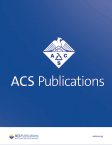制备用于光催化降解四环素的掺铁 In2S3/In2O3 复合材料
IF 3.4
Q2 PUBLIC, ENVIRONMENTAL & OCCUPATIONAL HEALTH
引用次数: 0
摘要
四环素(TC)不仅对水生生态系统和生物健康构成威胁,也是导致细菌产生耐药性的重要因素。光降解四环素是解决水环境中抗生素污染问题的有效策略。通过水热法成功合成了 Fe-In2O3/In2S3 复合材料,用于在可见光照射下光催化降解 TC。当Fe掺杂量为2%时,2%Fe-In2O3/In2S3复合材料在可见光照射下对三氯甲烷的降解率达到92.4%,高于In2O3/In2S3的41.5%、1%Fe-In2O3/In2S3的86.7%和3%Fe-In2O3/In2S3的79%。在可见光下,Fe-In2O3/In2S3 对四环素的光降解是一阶反应。光催化降解四环素的速率常数为 5.12 × 10-3 min-1,是 In2O3/In2S3 的速率常数的 4.1 倍。表征结果表明,2% Fe-In2O3/In2S3 复合材料对光生电子-空穴对具有极佳的分离效率,从而提高了光降解效率。此外,在最合适的反应条件下,四环素的光降解率为 92.4%。机理研究表明,铁离子的掺杂有效提高了光生电荷的转移效率,抑制了光生电子-空穴对的结合,从而提高了材料的光催化性能,实现了四环素的高效氧化降解。本文章由计算机程序翻译,如有差异,请以英文原文为准。

Preparation of Fe-doped In2S3/In2O3 Composite for Photocatalytic Degradation of Tetracycline
Tetracycline (TC) is not only a threat to aquatic ecosystems and the health of organisms but also a crucial contributor to the drug resistance of bacteria. The photodegradation of TC is an effective strategy for overcoming antibiotic pollution in the water environment. Fe–In2O3/In2S3 composites were successfully synthesized via a hydrothermal method for the photocatalytic degradation of TC under visible light illumination. When the Fe doping content was 2%, the degradation rate of TC by the 2% Fe–In2O3/In2S3 composite under visible light irradiation reached 92.4%, which was higher than that of 41.5% for In2O3/In2S3, 86.7% for 1% Fe–In2O3/In2S3 and 79% for 3% Fe–In2O3/In2S3. The photodegradation of tetracycline on Fe–In2O3/In2S3 was a first-order reaction under visible light. The rate constant of photocatalytic tetracycline degradation was 5.12 × 10–3 min–1, which was 4.1 times greater than the rate constant of In2O3/In2S3. The characterization results revealed the excellent separation efficiency of the 2% Fe–In2O3/In2S3 composites for photogenerated electron–hole pairs, which increased the photodegradation efficiency. Furthermore, under the most suitable reaction conditions, the photodegradation rate of tetracycline was 92.4%. A mechanistic study revealed that the doping of Fe ions effectively improved the transfer efficiency of photoproduced charges and inhibited the combination of photoproduced electron–hole pairs, thereby improving the photocatalytic performance of the material and achieving efficient oxidative degradation of tetracycline.
求助全文
通过发布文献求助,成功后即可免费获取论文全文。
去求助
来源期刊

ACS Chemical Health & Safety
PUBLIC, ENVIRONMENTAL & OCCUPATIONAL HEALTH-
CiteScore
3.10
自引率
20.00%
发文量
63
期刊介绍:
The Journal of Chemical Health and Safety focuses on news, information, and ideas relating to issues and advances in chemical health and safety. The Journal of Chemical Health and Safety covers up-to-the minute, in-depth views of safety issues ranging from OSHA and EPA regulations to the safe handling of hazardous waste, from the latest innovations in effective chemical hygiene practices to the courts'' most recent rulings on safety-related lawsuits. The Journal of Chemical Health and Safety presents real-world information that health, safety and environmental professionals and others responsible for the safety of their workplaces can put to use right away, identifying potential and developing safety concerns before they do real harm.
 求助内容:
求助内容: 应助结果提醒方式:
应助结果提醒方式:


